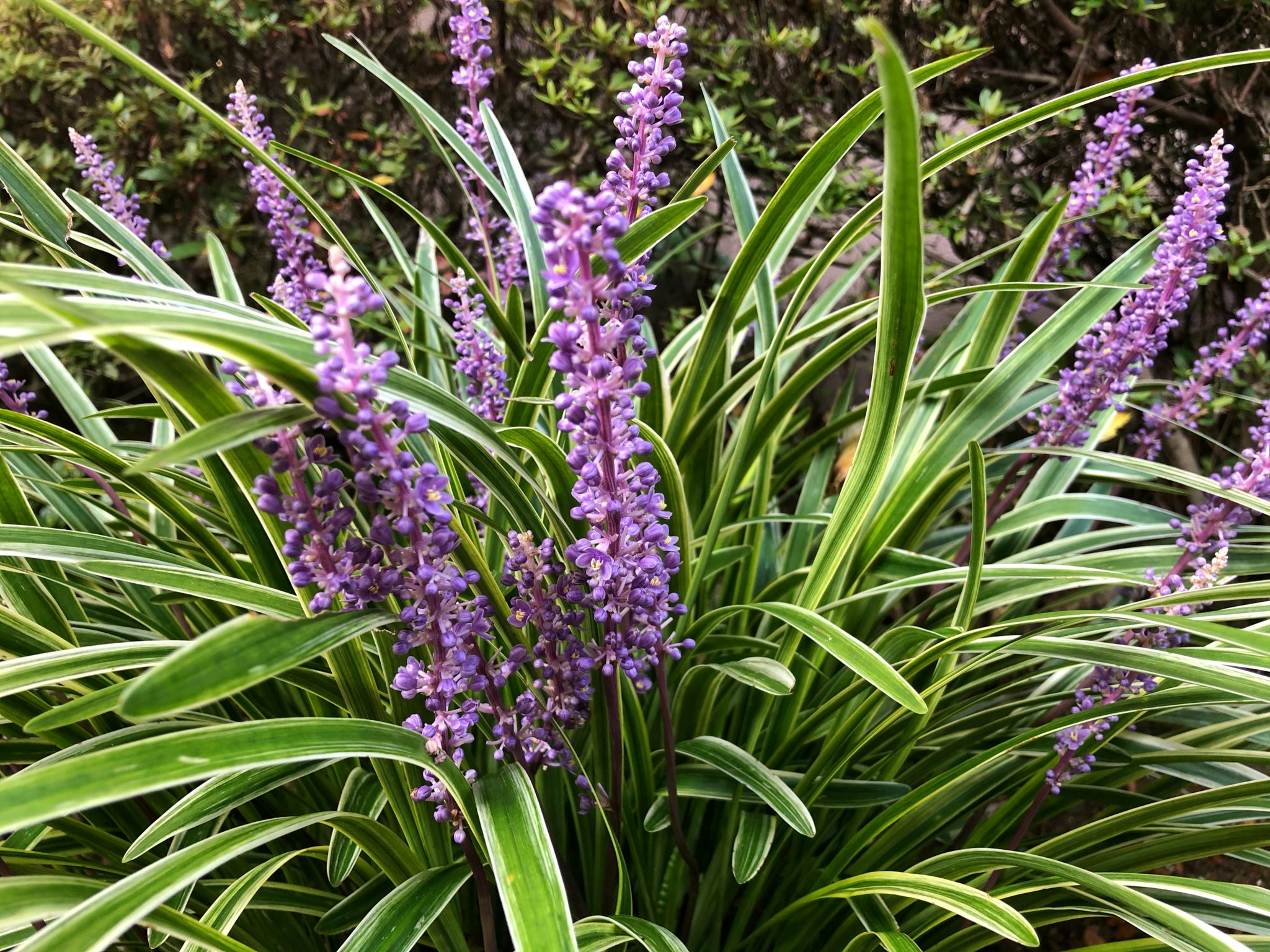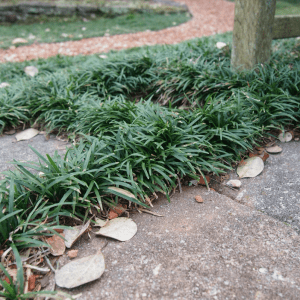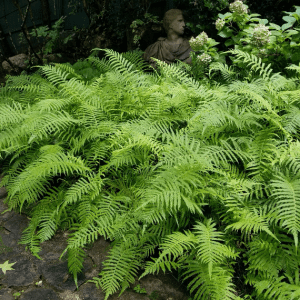Landscaping

Ground covers are used to provide edgings to pathways, control erosion, and add interest to landscape design.
In agriculture, ground cover is the name given to plants that are low growing and are used to cover a large area, giving a carpeted effect. Using several ground covers can add variety to the landscape and prevent soil erosion. Many ground covers also grow well in shady areas where turfgrass will not grow.
Landscape Uses
Ground covers used as edging for pathways help regulate foot traffic in the garden. They also visually tie unrelated shrubs and flowerbeds together in the landscape. They can be used between steppingstones to provide color and for accent areas under trees where turf does not grow very well. For steep hillsides or banks where mowing is difficult, ground covers may be a solution. A homeowner trying to create an interesting landscape design will find the use of ground covers rewarding.
- Figure 1. Dwarf mondo grass works well as a ground cover or in between steppingstones.
- Figure 2. Southern shield fern as a ground cover for moist, shady areas provides an interesting foliage texture.
Planting Ground Cover
Plan to install ground cover plantings 6 weeks before the first fall frost. To prepare the soil, simply till up the entire area you expect to cover and work in 3 inches of soil conditioner, compost, or peat moss. Apply fertilizers according to soil test recommendations and work them in well. After planting, water the area thoroughly, and apply 2 inches of mulch. Once established, ground covers usually maintain themselves with minimal care.
Plants No Longer Recommended as Ground Covers
There are a handful of ground cover plants that were recommended in previous years, but are now viewed as poor choices. These plants easily invade nearby wooded or naturalized areas and take over ground that should be populated with native plant species. A complete listing of all invasive plants in your county or state can be found at www.invasive.org. Some of these species not recommended for Alabama landscapes include:
- English Ivy (Hedera helix)
- Vinca (Vinca major)
- Lantana (Lantana camera)
- Wintercreeper euonymus (Euonymus fortunei)
Recommended Plants
Many perennials or shrubs serve as ground covers. Choose those that are adapted to your soil type and fit with the area’s sunlight and water availability. The following is a partial list of plants that work well as ground covers in Alabama landscapes.
Table 1. Ground Covers for Alabama Landscapes
| Name | Type | Height | Sun/Shade |
|---|---|---|---|
| Bugleweed Ajuga reptans | Creeping perennial; bears blue or purple flowers | 4 to 8 inches | Part sun to shade |
| Daylily Hemerocallis sp. | Perennial, dies back in winter | 24 to 36 inches | Full sun |
| Dwarf Mondo Grass Ophiopogon japonicus | Grass like, evergreen perennial | Up to 10 inches | Part sun to shade |
| Golden Stonecrop Sedum acre | Perennial evergreen, prefers well-drained soils | Up to 4 inches | Full sun |
| Shore Juniper Juniperus conferta ‘Pacific Blue’ | Evergreen | Up to 24 inches | Full sun |
| Blue Rug Juniper Juniperus horizontalis | Evergreen | Up to 12 inches | Full sun |
| Monkey Grass Liriope muscari | Grass like, evergreen perennial, variegated variety available | Up to 18 inches | Full sun to full shade |
| St John’s wort Hypericum calycinum | Semievergreen; turns red in fall; yellow flowers in summer; well drained soils only | 12 to 18 inches tall | Sun to part shade |
| Strawberry Begonia Saxifraga stolonifera | Perennial; for well drained soils with acidic pH; white spring flowers | Up to 12 inches | Part shade to shade |
| Candytuft Iberis sempervirens | Perennial; white spring flowers | Up to 12 inches tall | Full sun to part shade |
| Groundcover Roses Rosa x ‘Drift’ or ‘Carpet’ Series | Horizontal-growing shrub | Up to 24 inches tall | Full sun |
| Creeping phlox Phlox subulata | Semi-evergreen perennial; showy spring flowers | Up to 8 inches | Full sun |
| Spotted Deadnettle Lamium maculatum | Perennial; trailing vine; purple flowers in spring | Up to 12 inches | Part shade to shade |
| Southern Shield Fern Thelypteris kunthii | Perennial fern with arching fronds; best in moist, acidic soil. | Up to 36 inches | Part shade to full shade |
| Partridge Berry Mitchella repens | Evergreen perennial groundcover, native, with red berries in fall/winter | Up to 5 inches | Full shade |
 Revised by Allyson Shabel, Urban Regional Extension Agent, Alabama A&M University. Original authors: Kerry Smith, Extension Home Grounds Program Coordinator, and J. David Williams, former Extension Horticulturist, Professor Emeritus, Auburn University.
Revised by Allyson Shabel, Urban Regional Extension Agent, Alabama A&M University. Original authors: Kerry Smith, Extension Home Grounds Program Coordinator, and J. David Williams, former Extension Horticulturist, Professor Emeritus, Auburn University.
Reviewed March 2023, Ground Covers for Alabama Landscapes, ANR-0181



